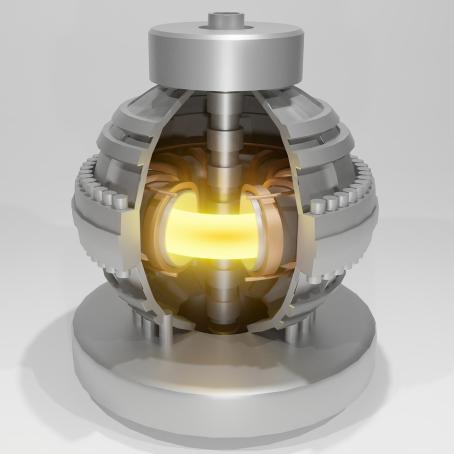
Lawson Criterion
4 min read
All efforts to achieve thermonuclear fusion on Earth is because we want to use it for electricity production in power plants. Power plants need to produce significantly more energy than they consume, so it is important to know under which conditions the fusion will be economically usable. This question seems difficult to answer as we don’t know yet what principle of fusion will be used, but it was asked and also answered in 1955 by engineer John D. Lawson. He wondered what conditions need to be fulfilled in order to get enough energy from a fusion reaction to use it in a power plant.
The idea is simple: Suppose that we have some kind of fusion reactor that somehow heats the fusion fuel. The fuel has to be heated to a very high temperature. The higher the temperature, the more energy the particles will get and there will be a higher probability that they will hit each other and fuse. However, with too many particles colliding without fusion, energy is lost due to radiation (called bremsstrahlung) so some optimal temperature has to be found. The other parameter is the density — the denser the fuel, the higher probability of particles meeting each other and therefore fusion. But we have to consider that our hypothetical fusion reactor is not perfect. No matter how the particles are confined, they are gradually escaping our reaction space or loosing energy by emitting photons. Every runaway particle is lost for fusion and the energy that it possessed too. So our last parameter is time. Let’s call it confinement time or how long our machine is able to keep particles with required density and temperature in our reaction space. Particles lost during this confinement time have to be replaced by new fuel with the required temperature, and heat lost by emissions have to be replaced by heating. The necessary heat must come from a fusion reaction. The ratio of fusion power produced by fusion to the power required to maintain the fusion is called a fusion energy gain factor or Q.
Fusion Energy Gain Factor, Q
If the Q is lower than 1, fusion can’t be used for energy production because it consumes more energy than it produces.
Scientific breakeven is the moment when Q = 1. All the energy created by a fusion reaction is used for its heating. This is a very important moment (achieved for the first time in 2022 on the inertial fusion device NIF), but still not enough for a fusion power plant.
Q much greater than 1 is needed for a power plant because only this excess energy can be converted to electricity and sent to the grid.
Ignition occurs when Q = infinity. Fusion is burning itself without any external heating.
In order to get Q to at least one, the density (n), confinement time (τ) and temperature (T) have to be in a relationship that is:
n * τ = f (T)
For certain reactions, say deuterium-tritium, the concrete parameter could be obtained
n* τ > 1.5 * 1020 s*m−3
This reaction will have the highest energy yield at temperature T ≈ 26 keV (300 million kelvin)
From the results of this Lawson criterion, there are two ways how to reach economically viable fusion. The first is to keep plasma with relatively low density (n ≈ 1020 m−3) but for a long confinement time (τ ≈ few seconds). This way leads to magnetic confinement. The second way is to confine plasma for shorter confinement time (τ ≈ 10−10 s), but with higher density (n ≈ 1030 m−3). This is exploited by inertial confinement.





